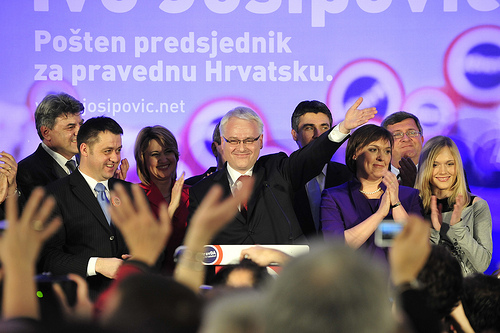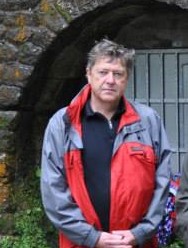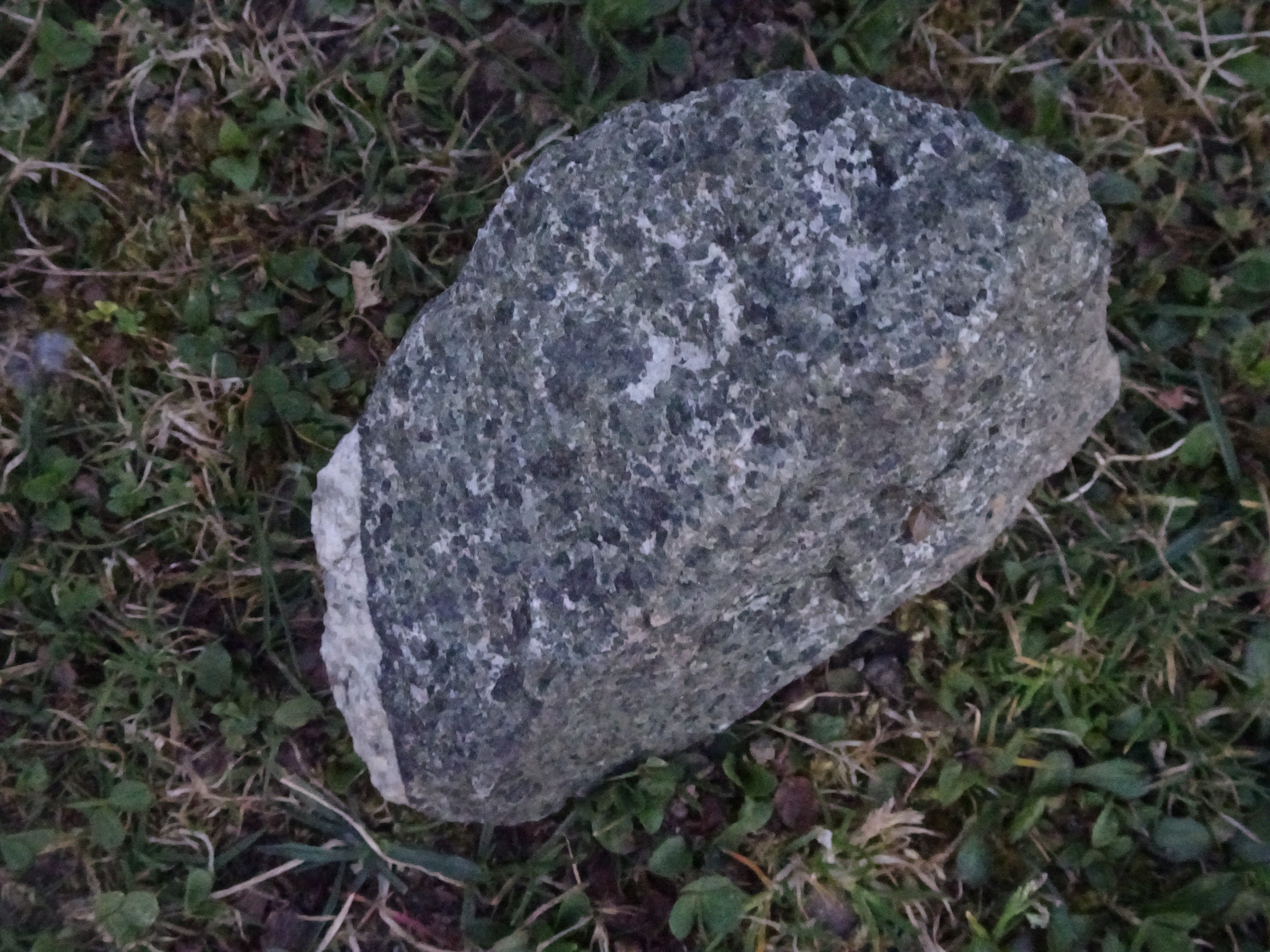|
Tezno Massacre
The Tezno massacre ( hr, Pokolj u Teznom) was the mass killing of POWs and civilians of the Independent State of Croatia (NDH) that took place in Tezno near Maribor, after the end of World War II in Yugoslavia. The killings were perpetrated by units of the Yugoslav Partisans in May 1945, in the Bleiburg repatriations. Summary executions began on 19 May when first prisoners arrived to the Tezno forest from nearby prison camps and continued until 26 May. Most of the bodies were buried in a several kilometers long antitank trench, which the Yugoslav authorities concealed and kept secret. It is estimated that around 15,000 soldiers and civilians were killed in the massacre. The graves were discovered in 1999 during a highway construction. Additional research of the burial sites was conducted in 2007 by the Commission on Concealed Mass Graves in Slovenia. In 2012, the Slovenian Government unveiled a memorial park at Tezno, where an annual commemoration is held. Background In May 1 ... [...More Info...] [...Related Items...] OR: [Wikipedia] [Google] [Baidu] |
Bleiburg Repatriations
The Bleiburg repatriations ( see terminology) occurred in May 1945, after the end of World War II in Europe, during which Yugoslavia had been occupied by the Axis powers, when tens of thousands of soldiers and civilians associated with the Axis powers fled Yugoslavia to Austria as the Yugoslav Partisans took control. When they reached Allied-occupied Austria, the British refused to accept their surrender and directed them to the Partisans instead. The prisoners of war were subjected to forced marches, together with columns captured by other Partisans in Yugoslavia. Tens of thousands were executed; others were taken to forced labor camps, where more died from harsh conditions. The events are named for the Carinthian border town of Bleiburg, where the initial repatriation was carried out. On 3 May 1945, the government of the Independent State of Croatia (NDH), a fascist puppet state established in parts of German-occupied Yugoslavia, that had undertaken a brutal campaign of geno ... [...More Info...] [...Related Items...] OR: [Wikipedia] [Google] [Baidu] |
Ivo Josipović
Ivo Josipović (; born 28 August 1957) is a Croatian academic, jurist, and politician who served as President of Croatia from 2010 to 2015. Josipović entered politics as a member of the League of Communists of Yugoslavia (SKJ), and played a key role in the democratic transformation of the League of Communists of Croatia (SKH) into the Social Democratic Party (SDP) as the author of its first statute. He left politics in 1994, but returned in 2003, winning a seat in the Croatian Parliament running as an independent candidate on the SDP party list. He won re-election to parliament as a member of the SDP in 2007. In addition to politics, Josipović has also worked as a university professor, legal expert, musician and composer, and holds a Ph.D. in Law and advanced degrees in music composition. Following the end of his first term in Parliament in January 2008, he ran in the 2009–10 presidential election as the candidate of the Social Democrats, which he had rejoined in January ... [...More Info...] [...Related Items...] OR: [Wikipedia] [Google] [Baidu] |
Tezno Commemoration 2015
The Tezno District (; sl, Mestna četrt Tezno, german: Thesen) is a city district of the City Municipality of Maribor in northeastern Slovenia Slovenia ( ; sl, Slovenija ), officially the Republic of Slovenia (Slovene: , abbr.: ''RS''), is a country in Central Europe. It is bordered by Italy to the west, Austria to the north, Hungary to the northeast, Croatia to the southeast, an .... In 2014, the district had a population of 11,732. After World War II, a large trench in Tezno became a major mass grave, which was later investigated by the Commission on Concealed Mass Graves in Slovenia. References External links * Districts of the City Municipality of Maribor {{Slovenia-geo-stub ... [...More Info...] [...Related Items...] OR: [Wikipedia] [Google] [Baidu] |
Zlatoličje
Zlatoličje () is a village on the right bank of the Drava River southeast of Maribor in northeastern Slovenia. It lies in the Municipality of Starše in an area that is part of the traditional region of Styria. The municipality is now included in the Drava Statistical Region. South of the settlement is a 136 MW run-of-the-river hydroelectricity, opened in 1969. A solar power plant is set on the river banks. Name Zlatoličje was attested in written sources in 1220–30 and later as ''Goldarn'' (and as ''Goldsdorf'' in 1320). The Slovene name is derived from the common noun ''zlatolika'' ' golden willow' (''Salix alba'' var. ''vitellina''), referring to local vegetation. A less likely derivation is from Slavic ''*zoltolykъ'' 'gold seeker'. Cultural heritage The village chapel A chapel is a Christian place of prayer and worship that is usually relatively small. The term has several meanings. Firstly, smaller spaces inside a church that have their own altar are often call ... [...More Info...] [...Related Items...] OR: [Wikipedia] [Google] [Baidu] |
Dogoše
Dogoše () is a village and a suburb of Maribor on the right bank of the Drava River in northeastern Slovenia in the City Municipality of Maribor. Name Dogoše was first attested in 1458 as Lendorf (and in 1763–87 as ''Dragosche, Landorf''). Based on the 18th-century transcription, the toponym is derived from the personal name ''Dragoš''. The name is believed to have originally been ''Dragoši'', meaning 'Dragoš and his people'. History Early settlement of the area is attested by the remnants of a building from antiquity along the road to Brezje (now part of Maribor). In addition to the building's foundations, the find included a small marble trough, which has been converted into a holy water font in the church in Brezje. Gold and silver Roman coins have also been found in the area. A fire station was built in Dogoše in 1928. Water mains were installed in the village in 1969.Savnik, Roman, ed. 1980. ''Krajevni leksikon Slovenije'', vol. 4. Ljubljana: Državna založba Slovenij ... [...More Info...] [...Related Items...] OR: [Wikipedia] [Google] [Baidu] |
Jože Dežman
Jože Dežman (born 26 September 1955) is a Slovenian historian, museum curator, philosopher and editor. He served as the director of the National Museum of Contemporary History in Ljubljana. Since March 2012, he has been the director of the Archives of Slovenia, where he had replaced Dragan Matić. Matić characterised the replacement as politically motivated and pointed out that Dežman is not an archivist. Dežman was born in the Upper Carniolan town of Lesce. He studied history and philosophy at the University of Ljubljana and finished his studies in 1997. For twenty years, he actively participated in the League of Communists of Slovenia and other Communist political organisations. In the 1990s, he was an active member of the liberal party Liberal Democracy of Slovenia. He later turned to more conservative positions. Since the mid-2000s, he has advocated the inclusion of anti-Communist perspectives in Slovenian historiography. Dežman described the fundamental characteri ... [...More Info...] [...Related Items...] OR: [Wikipedia] [Google] [Baidu] |
German Army (1935–1945)
The German Army (german: Heer, ; ) was the Army, land forces component of the ''Wehrmacht'', the regular German Armed Forces, from 1935 until it effectively ceased to exist in 1945 and then was formally dissolved in August 1946. During World War II, a total of about 13.6 million soldiers served in the German Army. Army personnel were made up of volunteers and conscripts. Only 17 months after Adolf Hitler announced the German rearmament program in 1935, the army reached its projected goal of 36 Division (military), divisions. During the autumn of 1937, two more corps were formed. In 1938 four additional corps were formed with the inclusion of the five divisions of the Austrian Army after the ''Anschluss'' in March. During the period of its expansion under Hitler, the German Army continued to develop concepts pioneered during World War I, combining ground and air assets into combined arms forces. Coupled with operational and tactical methods such as encirclements and "battle of a ... [...More Info...] [...Related Items...] OR: [Wikipedia] [Google] [Baidu] |
Montenegrin National Army
Montenegrin National Army ( sr, Црногорска народна војска / Crnogorska narodna vojska) was an army whose supreme commander was Montenegrin collaborationist politician and separatist Sekula Drljević. When Pavle Đurišić retreated with his forces from Montenegro toward Slovenia in 1945, he made a safe-conduct agreement with Drljević. According to this contract Đurišićs forces were aligned with Drljević as the "Montenegrin National Army" with Đurišić retaining operational command, based on instructions of Drljević. Background Montenegrin National Army was result of attempts of Sekula Drljević to create an army consisting of Montenegrins who live outside Montenegro. Establishment and actions On 22 March 1945 Pavle Đurišić signed an agreement with Drljević. According to this agreement the Chetnik 8th Montenegrin Army was agreed to be under Drljevićs supreme command as Montenegrin National Army. On 17 April 1945, after he returned to Zagreb, ... [...More Info...] [...Related Items...] OR: [Wikipedia] [Google] [Baidu] |
Mitja Ferenc
Mitja Ferenc (21 March 1960) is a Slovenian historian, educator, and author. Ferenc was born in Ljubljana, the son of renowned historian and partisan Tone Ferenc. He graduated from modern history at the University of Ljubljana in 1985. Since 2000, he has researched the graves of people killed on Slovenian territory by the Yugoslav Communist regime after the end of World War II in the Bleiburg repatriations. Between 2002–04, Ferenc was a member of the Commission on Concealed Mass Graves in Slovenia established by the Slovenian Government to document the 581 mass graves from Communist era found in Slovenia. Ferenc contributed to the European Public Hearing on "Crimes Committed by Totalitarian Regimes" organised by Slovenian Presidency of the Council of the European Union (January–June 2008) and the European Commission. His work was featured in the chapter "Secret World War Two Mass Graves in Slovenia". [...More Info...] [...Related Items...] OR: [Wikipedia] [Google] [Baidu] |
People's Defence Corps Of Yugoslavia
The People’s Defence Corps of Yugoslavia or KNOJ ( sh, Korpus Narodne Odbrane Jugoslavije, mk, Корпус на народна одбрана Југославија, sl, Korpus narodne obrambe Jugoslavije), was a corps of the Yugoslav Partisans in charge of internal security of liberated territories during World War II in Yugoslavia and later the territory of Communist Yugoslavia. KNOJ was created based on a directive by Marshal of Yugoslavia, Josip Broz Tito, on 15 August 1944. As liberated territories expanded, the corps was established to allow Partisan military intelligence organization (Department for People's Protection, OZNA) continued focus on core tasks. The corps comprised about 80,000 men at its peak. The first commander was Jovan Vukotić (1907–1982) and the supervision lay with the political commissar Vlado Janić (1904–1991). KNOJ was rarely used at the front, instead fell under the direction and supervision of OZNA. In July 1944, just before the form ... [...More Info...] [...Related Items...] OR: [Wikipedia] [Google] [Baidu] |
Pohorje
Pohorje (), also known as the Pohorje Massif or the Pohorje Mountains (german: Bachergebirge, ''Bacherngebirge'' or often simply ''Bachern''), is a mostly wooded, medium-high mountain range south of the Drava River in northeastern Slovenia. According to the traditional AVE classification it belongs to the Southern Limestone Alps. Geologically, it forms part of the Central Alps and features silicate metamorphic and igneous rock. Pohorje is sparsely populated with dispersed villages. There are also some ski resorts. Geography Pohorje is an Alpine mountain ridge with domed summits south of the Drava. It roughly lies in the triangle formed by the towns of Maribor (to the east), Dravograd (to the west) and Slovenske Konjice (to the south). To the northwest, it is bounded by the Mislinja River, to the south by the Vitanje Lowlands (), to the east it descends to the Drava Plain () and to the southeast it descends to the Pohorje Foothills (). It measures about from east to west an ... [...More Info...] [...Related Items...] OR: [Wikipedia] [Google] [Baidu] |





